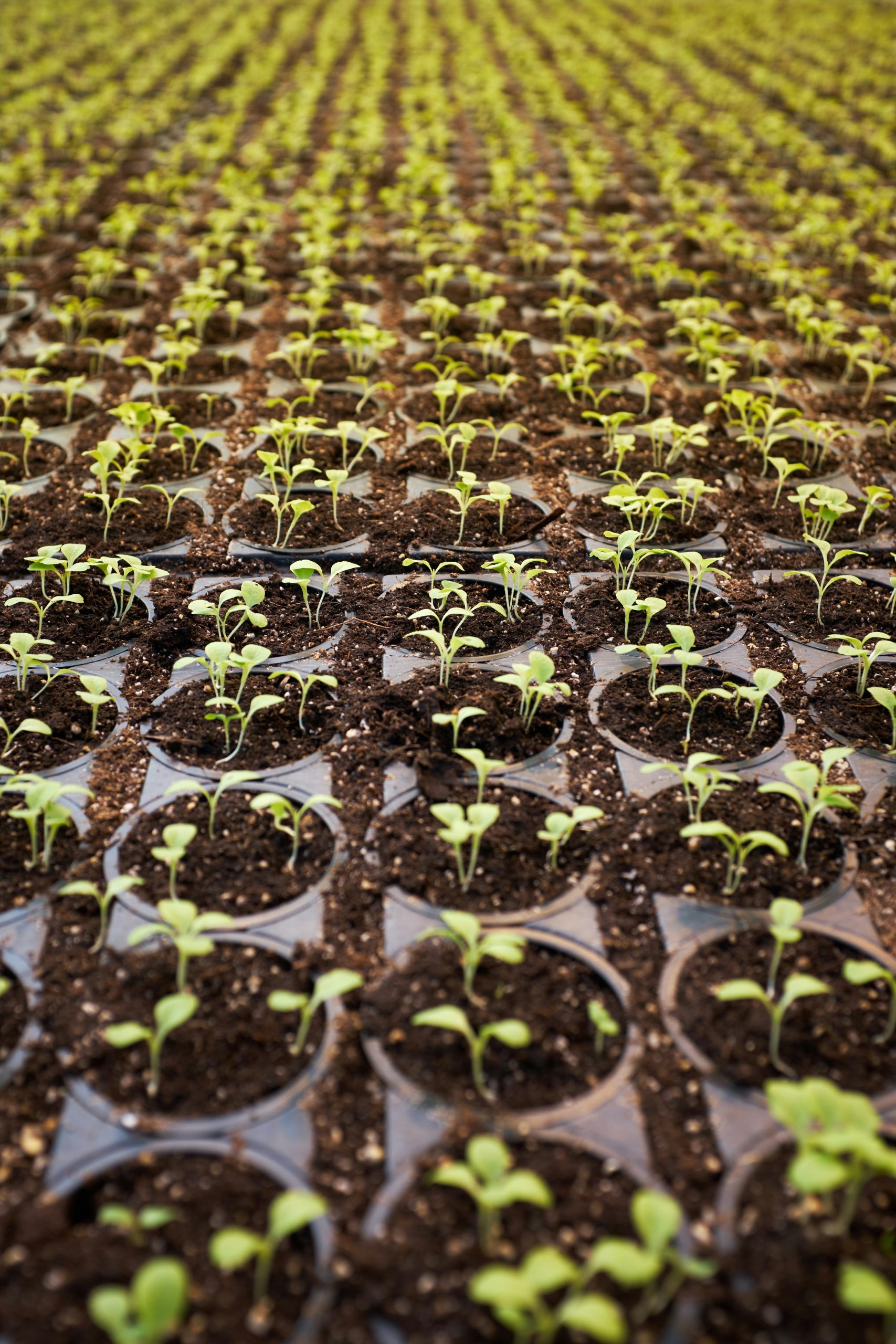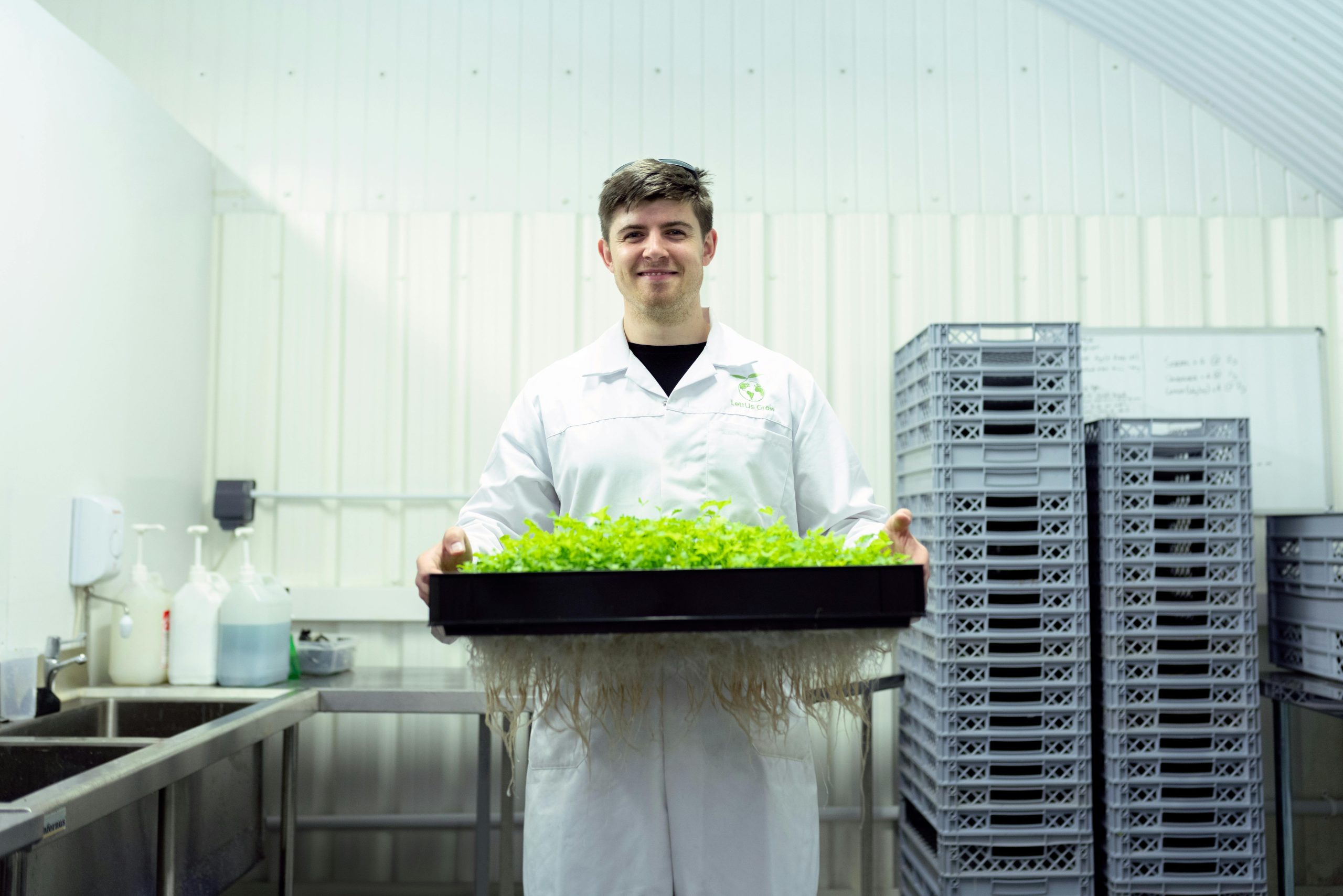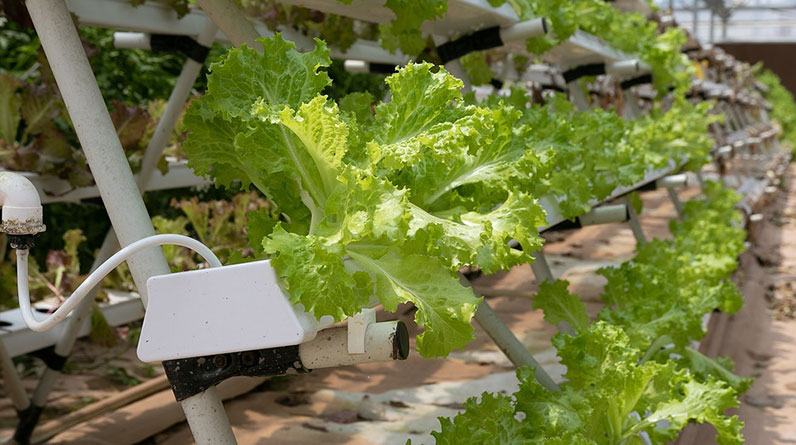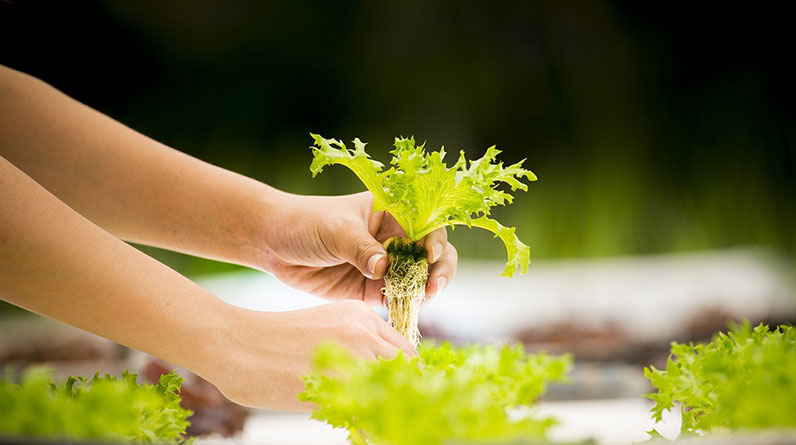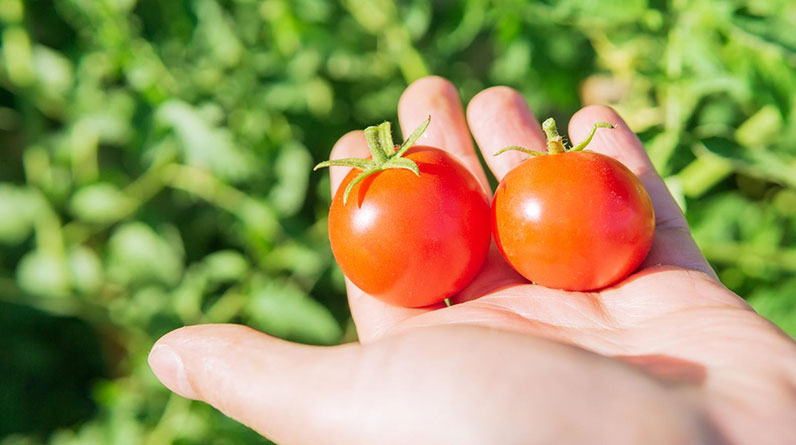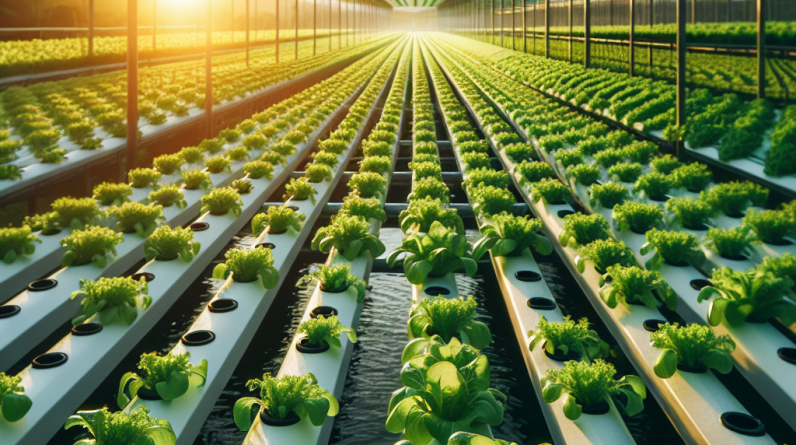
Resource Efficiency
Water Conservation
Let me tell you something – one of the coolest things about hydroponic farming is how well it conserves water. You see, traditional agriculture gobbles up a ton of water, and honestly, it’s pretty unsustainable. Hydroponics, though? It uses up to 90% less water. Imagine that! This is because the water in hydroponic systems is recirculated, so it all gets reused over and over. You’re really creating an efficient little loop that just makes more sense.
Plus, using this water-saving technique means you can also grow crops in areas where water is scarce. Think about how groundbreaking that could be! People are already doing it in deserts, proving that we can produce food no matter the weather conditions. This opens up so much potential for urban farming and feeding communities.
For me, it’s inspiring to think about how we can balance our hunger for fresh produce with conserving our precious water sources. I mean, what’s better than food grown sustainably? We all benefit from that!
Land Usage
Next up, let’s chat about land. Hydroponic farms can be set up anywhere – rooftops, warehouses, you name it! So, if you’ve got a little space, you can start a farm. I’ve even seen backyard setups that look incredible. It’s all about using your imagination and optimizing every square inch available. You don’t need sprawling fields of soil; you literally can grow vertically in shelves!
This opens up opportunities for city dwellers, too. Urban areas can often feel so disconnected from where food comes from. Hydroponic systems can bridge that gap, bringing fresh produce right back to local neighborhoods. You know what’s great? Fresher food means better taste – and frankly, who doesn’t want to bite into a crisp, juicy tomato grown just a few blocks away?
I love this idea of taking back control of our food sources. It feels empowering, and it connects us back to our food in such a real way. There’s so much potential, and the more land we can optimize, the better it is for our health and environment.
Energy Efficiency
And don’t get me started on energy! Hydroponic farms can use renewable energy sources, which is a game-changer for sustainability. I mean, think about how often we rely on fossil fuels to grow and transport our food. With hydroponics, the model can shift dramatically. Solar panels on a rooftop farm could power the entire operation and maybe even send energy back to the grid!
This also helps combat climate change. Since hydroponic farms can be local, they cut down on transportation emissions, which are no joke. Plus, with the ability to control the environment in which crops grow, we can optimize for energy use throughout the entire growing process. It’s all connected, and I find that super exciting!
As we continue to innovate, I believe energy efficiency in hydroponics will become even more sophisticated. It’s all about harnessing what nature has already provided us and using it smartly. After all, our planet deserves some TLC!
Food Quality and Freshness
Nutrient-Rich Produce
One of the major upsides of hydroponics is the amazing quality of the food produced. When plants are fed a well-balanced nutrient solution, they can be more nutrient-rich than those grown in traditional soil. Talk about a win for our health! They say you are what you eat, right? So why not make it the best quality possible?
There’s also something really vibrant about hydroponically grown produce – the colors are often more intense, and you really can taste the difference. I’ve had friends who were skeptical about hydroponic farming, but once they tried some fresh basil or strawberries, they were instantly sold. It’s like you’re tasting food in a different dimension!
The ability to grow crops year-round means we can enjoy seasonal fruits and veggies at any time too. And who doesn’t love that? It kind of revolutionizes how I think about eating and cooking. Freshness is key to flavor, and hydroponics does that brilliantly.
Quality Control
With hydroponic systems, you can control so many aspects of the growth environment, which means quality can be managed from start to finish. This control extends to pests and diseases, too! I’ve seen firsthand how much easier it is to maintain a clean environment in a hydroponic setup compared to traditional farms. Less chemical intervention means healthier food, and that’s something I can get behind!
Also, without soil pathogens to deal with, hydroponics minimizes the risk of contaminants. It’s such a relief knowing that my food is not only fresh but also safely grown. I can confidently whip up a meal without having to stress about what’s on my produce.
For me, quality control is the name of the game. It’s all about building a trustworthy food system that prioritizes health above all else. And clean, safe food? That’s my jam!
Flavor Profile
Among the countless reasons to fall in love with hydroponics, the flavor profile of the produce is one of the best. Seriously, you haven’t tasted food until you’ve tried hydroponically grown herbs and veggies. It’s all about the growing conditions; when plants are nurtured in an optimal environment, the flavors really shine.
I remember cooking a dish with hydro-grown arugula that blew my mind. It had this peppery flavor that was so fresh, it transformed the whole salad into something special. Flavor is crucial, and this method elevates that experience to a whole new level!
My philosophy is it’s worth sourcing the best possible ingredients. Whether it’s for a casual weeknight meal or a dinner party, I always try to incorporate quality produce. Hydroponically grown options are definitely winners, especially when they can make a simple dish pop!
Sustainability and Environmental Impact
Reducing Carbon Footprint
Let’s talk about sustainability. Hydroponic farms have the potential to drastically reduce our carbon footprint. Because they can be located closer to where the population lives, it cuts transportation emissions significantly. That’s the kind of impact we need to consider as we work towards a greener future!
I often think about how our daily choices affect the environment. By supporting local hydroponics, we’re forging a path to sustainability while enjoying fresh food. It’s a win-win in my book! Imagine reducing food miles to just a few blocks – that’s like eliminating a chunk of greenhouse gas emissions.
Plus, the advanced farming practices and technology used in hydroponic systems allow more efficient land use. By farming more vertically and consuming fewer resources, we’re promoting a sustainable way of growing food that doesn’t just benefit us but the planet as well. It makes my heart happy!
Waste Reduction
One of the great things about hydroponic farming is how it reduces waste. In traditional farming, a portion of crops often goes to waste due to soil quality issues, pest infestations, or simply because they don’t meet aesthetic standards. But hydroponics? Not so much. With precise nutrient delivery and controlled environments, it minimizes waste significantly.
When I see produce that is vibrantly beautiful and perfectly grown, I can’t help but feel excited. Less waste not only means better consumption of resources but also more food for us all! It’s the kind of efficiency I think we should all strive for in our daily lives!
By pushing for zero waste initiatives in hydroponics, we’re setting an example for future food systems. This mindset can shift how industries operate, and it’s crucial that we prioritize sustainability moving forward.
Community Impact
Hydroponics is also bringing communities together, which I think is incredibly valuable. Urban farms foster a sense of community engagement, allowing people to connect through education and shared experiences. People are learning about food production and sustainability, which is crucial in changing mindsets and habits.
I’ve seen local hydroponic farms host workshops, offering hands-on growing experience. It’s not just about farming; it’s about building relationships and creating a food movement that everyone can be part of. The impact on local economies is tremendous when you consider the jobs it creates, too!
Everyone deserves access to fresh food and the knowledge of how to grow it. Hydroponics provides that opportunity for connection and community building. It’s something we need as we face future food challenges together.
Innovation and Technology
Smart Farming Solutions
The future of hydroponics is tech-driven, and as a marketing expert, I can’t help but get excited about this! We’re seeing innovative solutions like automated systems that monitor water, light, and nutrient levels. Imagine having a digital assistant for your plants; it’s like farming with a superpower!
Using technology not only streamlines the process but also maximizes yield and quality. And let’s be honest, who wouldn’t want to be part of the farming of the future? I find it incredible that we can combine cutting-edge tech with something as basic as growing food. It creates a new wave of possibilities.
Plus, smart farming is about connecting people with their food in an engaging way. As we tap into these solutions, we can involve more individuals in the journey of food production. The future is looking bright, and it’s all thanks to these innovative tools!
Data-Driven Decisions
Staying ahead in hydroponics also means making data-driven decisions. Without a doubt, this strategy is key to improving the efficiency of food production. Monitoring crop health through sensors provides real-time feedback that farmers can act on immediately. No more guesswork!
Getting the pulse on what crops need allows farms to adapt and thrive. It’s fascinating to see how data helps us understand plant biology in ways we never have before. For a nerd like me, that’s a dream come true! It brings a level of precision that was unheard of a few decades back.
When farms leverage data effectively, they can enhance productivity while also preserving resources. The positive ripple effect from these decisions impacts not just the farm but the environment as a whole. It’s that delicate balance we’re striving for, and the future holds so much promise!
Research and Development
Lastly, I’ve got to touch on research and development in hydroponics. It’s constantly evolving, with scientists and engineers working hard to innovate and streamline processes. Every new study or discovery pushes the envelope of what we thought was possible in food production.
There’s a wealth of knowledge being shared across the globe as people dive into the science of growing without soil. Sharing findings can bolster how we tackle food security issues. When I see collaboration in research, it gives me hope for the future!
Investing in R&D is crucial if we want to make hydroponics accessible to everyone. With ongoing improvements, we could see prices drop and methods become more streamlined. I find that so encouraging as we work towards solving some of the world’s biggest challenges in food production!
Frequently Asked Questions (FAQ)
1. What are the main benefits of hydroponic farming?
Hydroponic farming offers numerous benefits, including water conservation, efficient land use, year-round production, and nutrient-rich produce. It helps reduce carbon footprints and fosters community engagement by promoting local food sources.
2. Can hydroponics be done at home?
Absolutely! Home hydroponics can be set up with small systems that fit in kitchens or backyards. It’s a fun and rewarding way to grow your own herbs and vegetables, and it doesn’t require much space.
3. How does hydroponics affect food quality?
Hydroponics can enhance food quality by controlling growing conditions and providing optimal nutrient delivery. This often results in produce that’s richer in flavor and nutrients compared to traditionally grown crops.
4. What technologies are used in hydroponics?
Hydroponics utilizes various technologies, including automated nutrient delivery systems, sensors to monitor plant health, and LED grow lights that maximize crop growth. These innovations help optimize production and efficiency.
5. Is hydroponic farming sustainable?
Yes! Hydroponic farming is often seen as a more sustainable option compared to traditional agriculture. It uses significantly less water, reduces carbon footprints through local production, and minimizes waste, contributing to a more sustainable food system.




